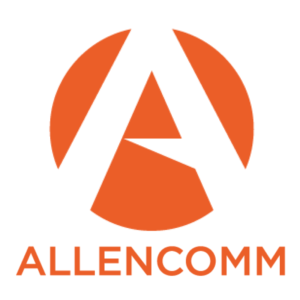Using AI Technology To Improve Learning Experiences
When it comes to employee training and development, eLearning tools provide a unique opportunity to elevate the learning process by utilizing personalization to accommodate the needs of the employee both as a learner and person. One-size-fits-all traditional education strategies are largely ineffective because they fail to account for the diverse needs, learning styles, and goals of each learner. Personalization in eLearning involves designing a course that tailors the learning experience to meet the unique requirements and characteristics of each learner, which in turn enhances engagement, retention, and motivation. Effective employee development begins with first having a clear understanding of the learner and their needs, and then molding the eLearning design accordingly.
Of course, the first step to add personalization to your employee training and development programs is to start by developing a skills matrix for those employees in your learning audience. You need to know what skills must be acquired to reach successful outcomes based on business objectives. This analysis will identify and link desired employee behaviors with overall performance outcomes. If you don't have an existing skills matrix, you might also begin with a needs analysis to gather that information. Once you're ready to add personalization, the following best practices for learning personalization are recommended.
Here are 3 ways to add personalization to your eLearning designs.
Adaptive Learning Pathways
One important way to make sure that employees get the most out of their training is to ensure that the training meets the unique needs of the learner. Adaptive learning utilizes personal information about the learner, drawing from their reported prior knowledge, assignment completion times, and pre-assessment scores, to develop a learning journey based on areas of training that need extra attention. An important part of this is allowing each learner to create their own profile within the eLearning design. This innovative form of personalization optimizes employee time and attention, allowing the learner to engage with content that is relevant to them. Using personal employee metrics to build the course around the needs of the learner rather than assuming these needs allows them to develop in their role with greater speed and competency.
Personalized Feedback Delivery
Feedback is an integral part of any learning journey, and this is true for eLearning trainings as well. Your design should allow the learner to get personal feedback on their progress, successes, and areas of improvement. Not only are these analytics important for building an adaptive learning pathway (see previous section), but personalized feedback allows the learner to rationalize the relevance and value in participating in a training, which improves engagement and motivation in the course. The eLearning designs tap into the power of feedback when learners can understand their own personal goals and engage with self-reflection in their journey. A great way to do this in employee training is by allowing the employee to go through simulations of relevant on-the-job scenarios and understand how their choices are accurate or can use improvement. Real-time feedback and personal progress reporting are important ways to elevate employee training and focus on the learner experience.
Multimedia Options
Personalization means not only personalizing eLearning content; it's also about personalizing the environment in which content is given. Going to school, many of us became aware of "learning styles" that did and did not work for us—this same consideration must be given when companies are using eLearning to promote employee development. Whether the divide is generational, geographical, or cultural, employees will interact with content formats in different ways. Some employees prefer PDF summaries, others engage more with audio or visual representations. Since eLearning is all about using technological education tools to improve the learning experience, it's important to provide options for different media so the learner can choose the path that aligns best with their learning style and preferences.
Conclusion
As eLearning technology continues to advance, we can't forget that the goal of every course is to promote tangible change in the learner, and one of the best ways to do this is by adopting personalization techniques. There are many ways that your employee training can benefit from personalization elements, and it is necessary to take these steps to facilitate an optimal learning environment to address the diverse needs of both your company and employees.
Read More:
- How to integrate adaptive learning into your corporate training and eLearning courses
- How to Get Useful Feedback from Your Employees
- 6 Ways To Use Task Simulations To Avoid The Fear Of The Unknown In Compliance Online Training
- Learner Experience: Why It's Important and How to Improve It
- W. L. Gore & Associates Builds Trust and Confidence with Privacy Training









